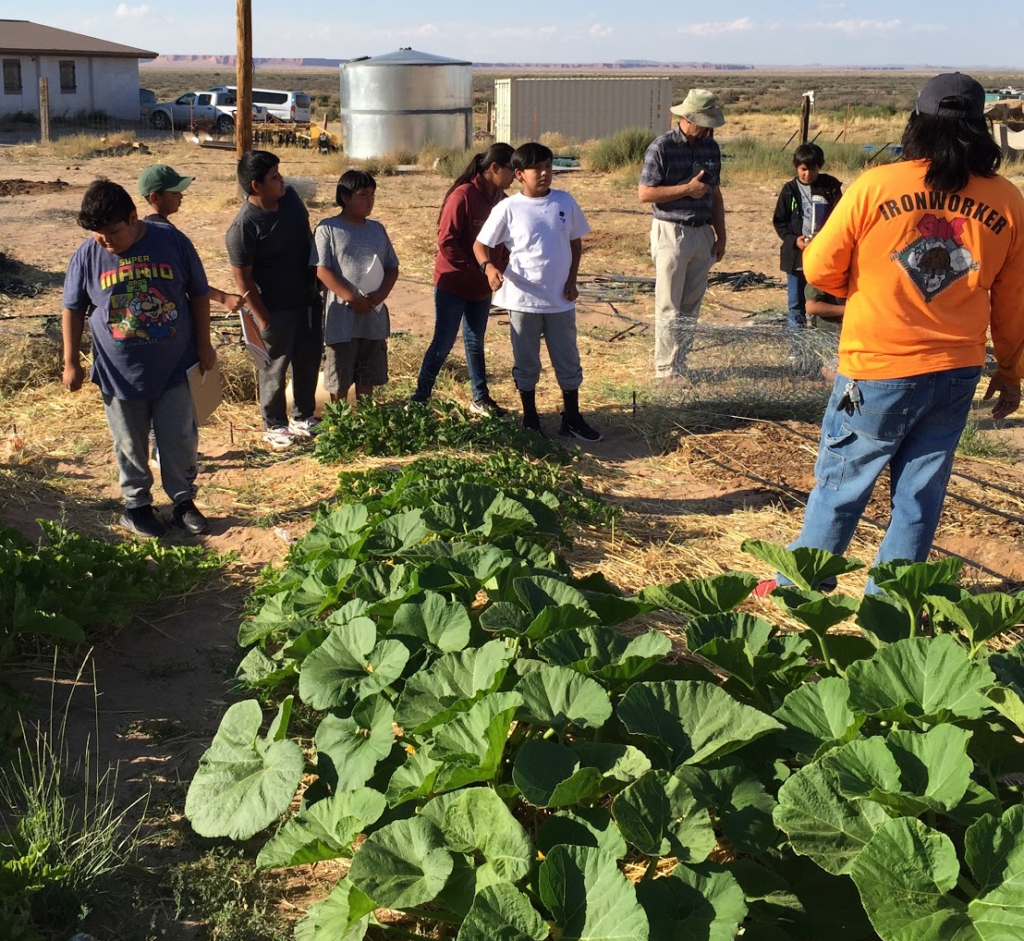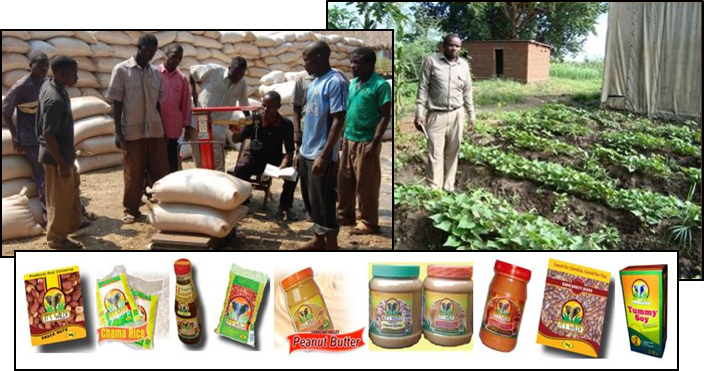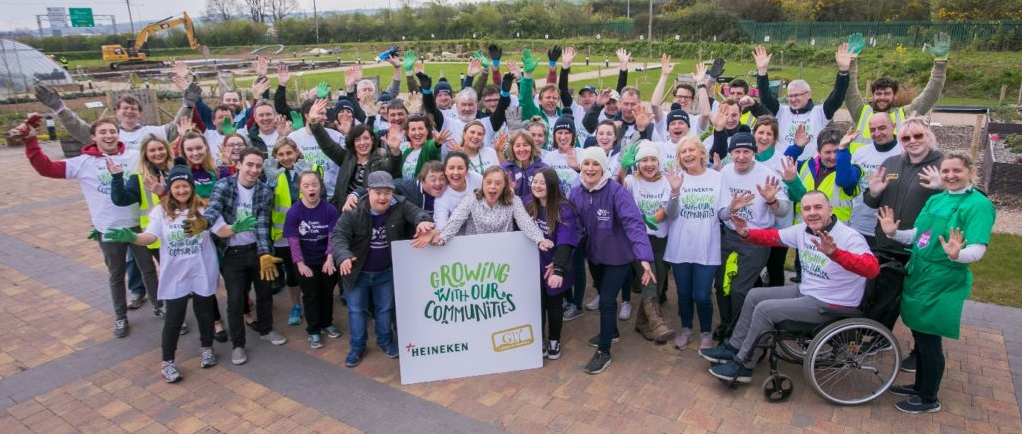Community responses to food concerns during COVID-19 shine the light on opportunities for all of society. Small farming and gardening at home boost food security, economic activity, and cultural connections.
This pattern highlights promising paths to more resilient, sovereign, nutritious, and prosperous food networks. While not always as efficient as externally-controlled food systems, these regional networks enable producers and consumers to respond more quickly and creatively to new challenges like disease outbreaks or natural disasters. They stimulate community innovation and resilience amid shifting circumstances.
Furthermore, small farmers and home gardeners networking together, for both commercial and social purposes, tend to create nimble infrastructure which can then be used to deliver other economic and social services as well. This is because networked food systems enable frequent and adjustable movement of products and information in a region (since food is needed daily, and these people sometimes have an economic interest in aggregating product to sell outside the region even in the midst of crisis).
For example, during COVID-19, we see that Tolani Lake Enterprises, located on the indigenous Navajo Nation in North America, started a “home gardening kit” intiative that is now also distributing healthcare supplies, clean water, and COVID-19 educational materials, and is building community connections around other issues. They started in April to  address food security by distributing Native seeds, gardening tutorials, recipes using foods grown in your own garden, and a social support network. They observed some gardeners and small farmers also experimenting more than before with rainwater harvesting, greenhouses, hoop houses, and lasagna bed garden techniques. Their new systems for reaching remote households quickly attracted attention for provision of COVID-19 relief supplies. This underscores how regional food systems align local resources and relationships in ways that are also inherently adaptable and quick-responding to other local priorities. (In this case it may seem a mixed blessing: it supports the critical COVID-19 healthcare response, but this extra attention might also be slowing down the local food sovereignty impact). PHOTO: Tolani Lake Enterprises (pre-COVID).
address food security by distributing Native seeds, gardening tutorials, recipes using foods grown in your own garden, and a social support network. They observed some gardeners and small farmers also experimenting more than before with rainwater harvesting, greenhouses, hoop houses, and lasagna bed garden techniques. Their new systems for reaching remote households quickly attracted attention for provision of COVID-19 relief supplies. This underscores how regional food systems align local resources and relationships in ways that are also inherently adaptable and quick-responding to other local priorities. (In this case it may seem a mixed blessing: it supports the critical COVID-19 healthcare response, but this extra attention might also be slowing down the local food sovereignty impact). PHOTO: Tolani Lake Enterprises (pre-COVID).
Another example of regional food producers and consumers creating nimble infrastructure is the cooperative food company COMACO in rural Zambia, with over 100,000 small farming families working together to bolster food security and sell products made from surplus to urban markets. This year COMACO responded quickly to springtime floods that wiped out its community members’ gardens, raising money and procuring and  distributing quick-growing maize seed so over 1,500 families could replant food for their households while there was still time in the growing season. Such quick response in a remote region was only possible because of the adaptive, locally controlled infrastructure they had already developed. Of note, this flood relief effort also stopped a likely increase in illegal elephant hunting because of food shortages. PHOTOS: COMACO Zambia (pre-COVID).
distributing quick-growing maize seed so over 1,500 families could replant food for their households while there was still time in the growing season. Such quick response in a remote region was only possible because of the adaptive, locally controlled infrastructure they had already developed. Of note, this flood relief effort also stopped a likely increase in illegal elephant hunting because of food shortages. PHOTOS: COMACO Zambia (pre-COVID).
In Ireland, the Grow It Yourself (GIY) movement creates community support networks encouraging thousands of people to grow a piece of their own food for the first time.  Because of COVID-19, GIY is now being consulted and supported by government agencies looking at the resilience and local control of Ireland’s future food systems. PHOTO: Grow It Yourself Ireland (pre-COVID).
Because of COVID-19, GIY is now being consulted and supported by government agencies looking at the resilience and local control of Ireland’s future food systems. PHOTO: Grow It Yourself Ireland (pre-COVID).
Another interesting aspect of this trend/opportunity, highlighted by Tolani Lake Enterprises, is that home gardening can also provide culinary, cultural, nutritional and ecological “entertainment” for young people during times of home isolation. Gardening in traditional and tasty ways, and networking with friends about it, channels periodic boredom into action around the package of local food sovereignty and culture and ecological vitality and improved nutrition.

Here are some other local food enterprises shifting operations in response to COVID-19, creating new systems that will likely last into the future:
In California USA, university students launched web app for food consumers to connect directly with farmers, supporting food and nutritional security for consumers and business sustainability for farmers amid food supply disruptions caused by COVID-19: https://www.ksby.com/news/local-news/cal-poly-students-connect-slo-co-farmers-with-customers-as-coronavirus-disrupts-supply-chain
In Bangladesh, small farmers in the supply chain to urban food company that has been disrupted by COVID-19 re-organize to create a new local “emergency food markets,” providing food for people at risk and ongoing business for the farmers: https://reliefweb.int/report/bangladesh/bangladeshi-farmers-respond-covid-19-innovation
In the United Kingdom, a coffee kart business training homeless people as baristas pivoted to start providing coffee to essential health care workers, supporting those workers with extra services during these difficult times, while also providing ongoing employment for the formerly-homeless:
https://www.forbes.com/sites/trevorclawson/2020/06/11/social-setbackhow-social-impact-businesses-are-adapting-to-the-realities-of-the-pandemic/#34ba4ef221aa
The Green America movement for sustainable home gardening, started to promote resiliency amid climate change, is seeing rapid increase in home gardening during COVID-19:
https://www.beaumontenterprise.com/news/article/Hoosiers-embrace-of-victory-gardens-grows-15366767.php
Related article in the U.S. press today, authored by prominent chefs, doctors, and U.S. Senator: “The American food system is not broken — it is functioning as designed, a system optimized for efficiency, not one optimized for resilience and nutrition.”
https://www.cnn.com/2020/08/02/opinions/us-nutrition-insecurity-snap-goel-nischan-frist-coliccio
Here are more examples of dynamic local food system development in response to COVID-19, from press articles in the United States:
“Small New Orleans farmers worried coronavirus would crush them. They were wrong.”
New food system leaders cite characteristics such as delivering orders to customers’ doors anywhere in their community; food staying on the vine until it is ready to be eaten, because it is grown locally; local farmers cross-supplying each other if someone runs out of product; and working directly with local leaders on food-related challenges in ways that build community capacity for a lot more people. https://www.nola.com/gambit/food_drink/food_news/article_fe2757f0-d282-11ea-9fc6-c70b4ae6832e.html
“Phoenix Weaving Together New Local Food System Amid a Pandemic.”
Using COVID-19 relief funds to create new connections between local farmers and local restaurants to last far beyond the pandemic (and navigating public policy and grant management in new ways to do so).
https://nextcity.org/daily/entry/phoenix-weaving-together-new-local-food-system-amid-a-pandemic
“Food insecurity amid Covid19 prompts Native Americans to return to their roots.”
Many Native Americans are encouraging farmers and communities, with seeds and support networks, to restore their own food systems.” https://cronkitenews.azpbs.org/2020/08/03/covid-indian-country-food-insecurity-native-americans/
“Covid19 – Has Given Consumers Five Reasons to Eat Locally.”
The pandemic has exposed communities’ lack of local food systems…challenging countries, governments, and communities rich and poor to focus on local food, which is good for economies, health, more resilient to supply chains, the environment, and community development.
https://www.forbes.com/sites/daphneewingchow/2020/07/30/covid-19-has-given-consumers-five-new-reasons-to-eat-local/#6af8917a3ccc
Another: Indigenous and biodiverse food systems show resilience amid COVID-19:
From this article, studies show how Indigenous people have often built resilient food systems that continue to flourish amid COVID-19. Some Indigenous people are ahead of the game because of crop diversity as foundation for their food system, often related to longstanding culture of deep respect for the land.
https://news.globallandscapesforum.org/46234/why-global-food-systems-should-resemble-those-of-the-indigenous-peoples/
“Growing Food Sovereignty at Klemtu”
With the consequences of COVID-19 still unfolding, one area of major disruption has been to global food systems, resulting in significant increases in food scarcity and food insecurity.
But some communities around the world are taking charge in their hands. The Kitasoo/Xai’xais First Nations in Klemtu on British Colombia (B.C.)’s central coast are “working to develop food and nutritional resilience through greenhouse gardening and home garden boxes.”
https://www.coastmountainnews.com/news/growing-food-sovereignty-at-klemtu/